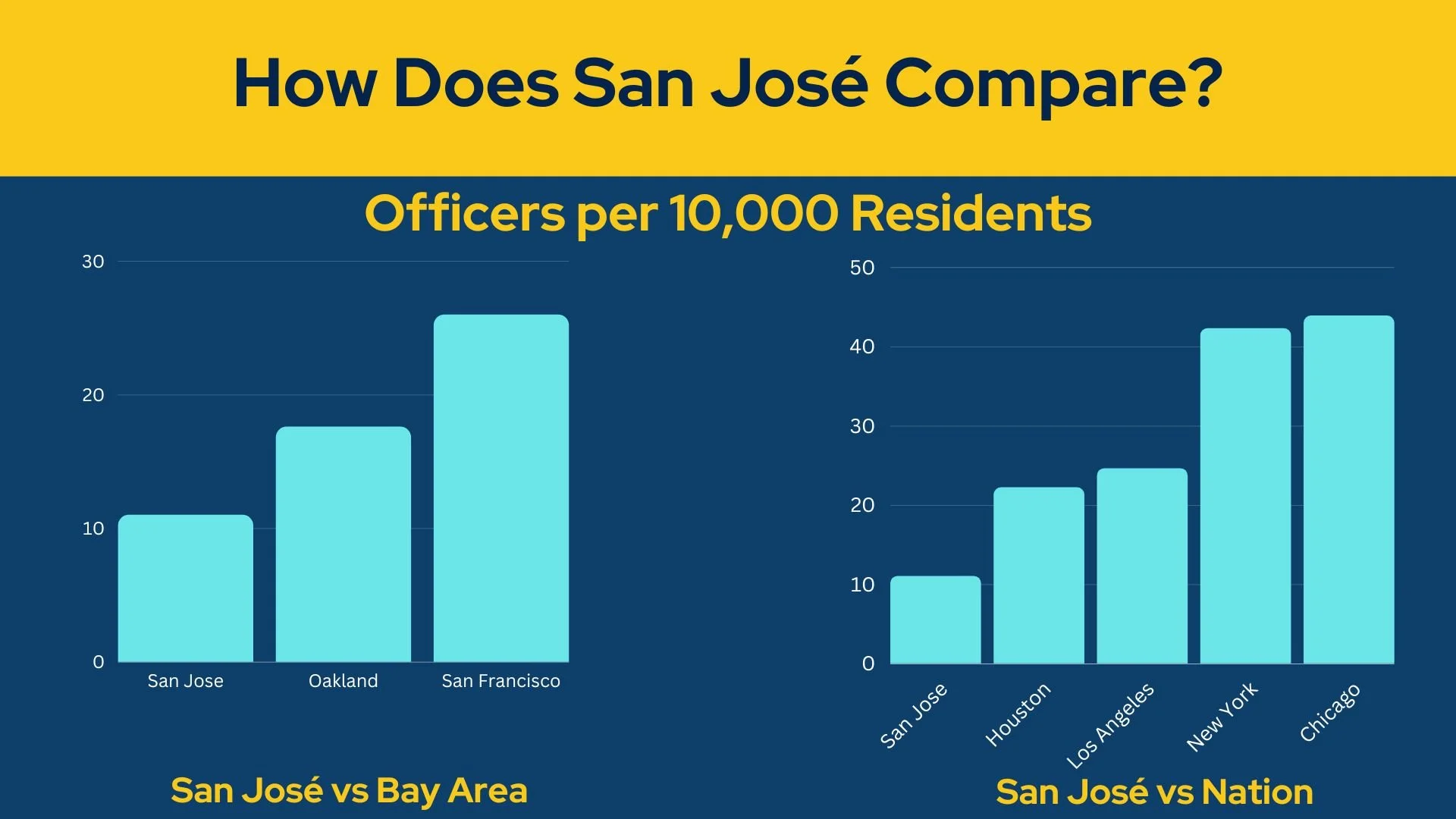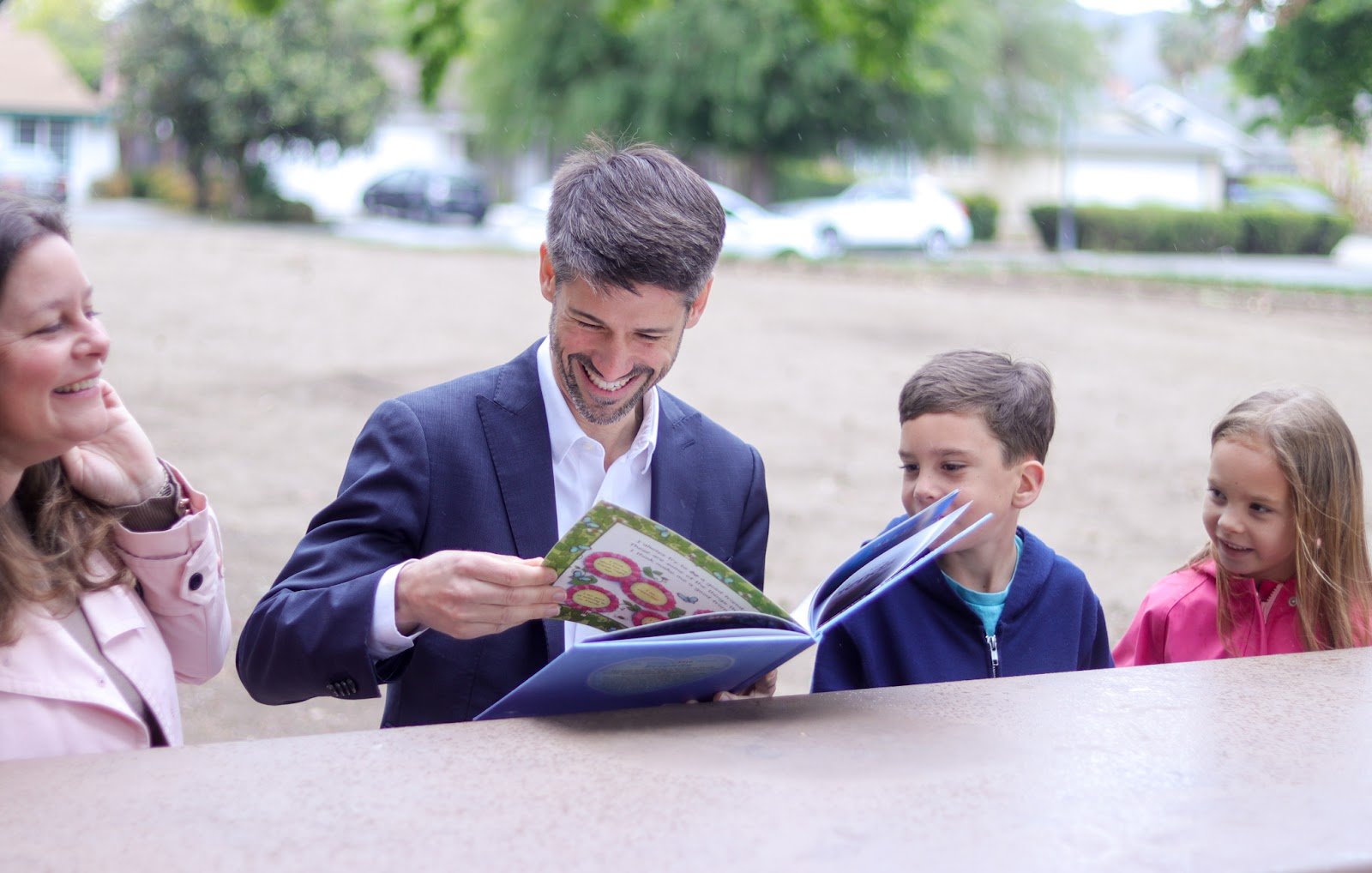Increasing
Community Safety
MAYOR MATT IS BRINGING URGENCY to one of San Jose’s most pressing problems — crime. He knows that the most fundamental responsibility of government is keeping us all safe. His plan focuses on proven and cost-effective ways to increase safety in our neighborhoods like doubling the rate at which we hire officers, allocating more money to recruitment and retention, exploring call diversion and investing in crime prevention.
Right now, San Jose has one of the most thinly staffed police departments in the country – this low-capacity is impacting our response rates. We have 20.1% more residents than San Francisco but fewer than half the number of officers. Last year, the City Council approved and provided ongoing funding for 15 additional hires in the San Jose Police Department. But it’s just not enough – Mayor Matt succeeded this year in doubling our hiring rate to over 30 new police officers and staff per year.
At the same time, we need to make sure we can fill these roles with the best applicants – especially as the number of people applying to our academy has dropped by 80% in the past 5 years. To do so, the Mayor has pushed for greater investment in proven recruitment methods, including campus outreach, referral bonuses, and relocation stipends.
Our police department sees the lowest staffing levels in the nation
After we recruit, hire, and train these officers, we have to make sure we are not overworking them to the point that they no longer want to serve the community. We can improve morale by empowering our officers to focus on the work they were hired and trained to do – namely addressing serious crime – and provide relevant resources and trained professionals to respond to mental health crises.
As the capital of Silicon Valley, it’s just common sense that we implement technology in a more effective way to make our officers' lives easier – without violating anyone’s rights. Automatic License Plate Readers (APLRs) outside of shopping malls and other places where we have seen “smash and grab” robberies are just one way we can both deter crime and apprehend individuals who commit crimes. These cameras deter all types of crime, and have even located cars involved in hit-and-runs.
As we make our neighborhoods safer by increasing the number of officers on our streets and focusing on technology, recruitment and retention, we can’t forget about prevention. The best way to prevent crime is to invest in our youth. These programs include prevention and crisis response for schools, helping youth ages 12-24 remove tattoos that are a barrier to furthering their education and employment, and connect hospitalized youth with critical services that can help break the cycle of violence. When our kids grow up with better opportunities, our future is better assured.
CRIME IS ONE OF OUR TOUGHEST CORE CHALLENGES — but it is solvable if we focus on scaling common sense solutions to reduce response time and keep all our communities safe, especially our lower-income communities who have historically been the hardest hit by crime.





